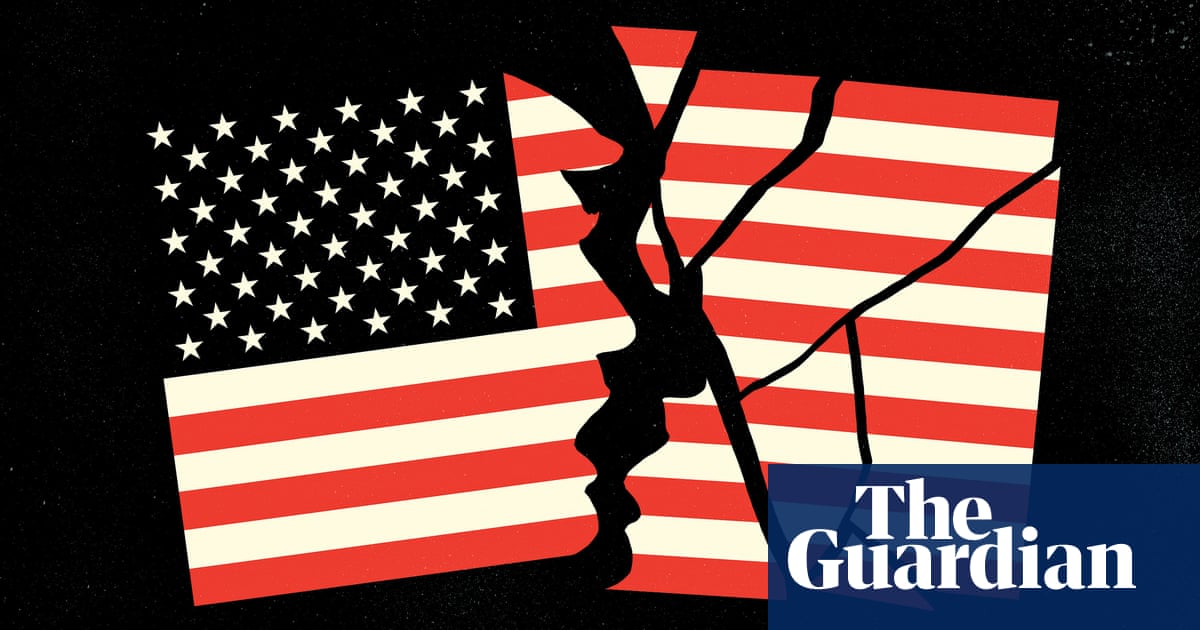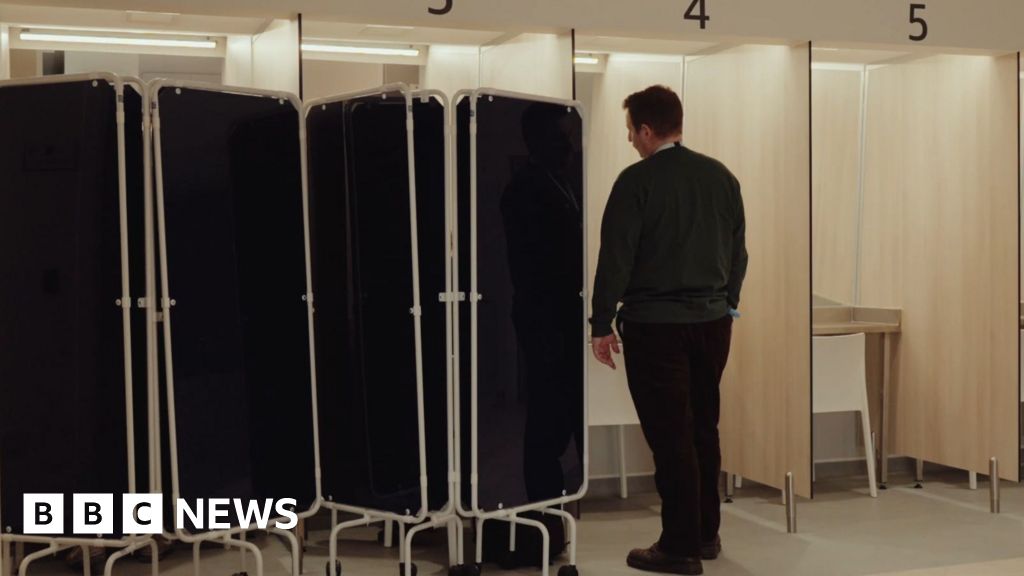Maraida Caraballo Martínez has been an educator in Puerto Rico for 28 years and the principal of the elementary school Escuela de la Comunidad Jaime C Rodriguez for the past seven. She never knows how much money her school in Yabucoa will receive from the government each year because it isn’t based on the number of children enrolled. One year she got $36,000; another year, it was $12,000.
But during the Biden administration, Caraballo noticed a big change. Due to an infusion of federal dollars into the island’s education system, Caraballo received a $250,000 grant, an unprecedented amount of money. She used it to buy books and computers for the library, whiteboards and printers for classrooms, to beef up a robotics program and build a multipurpose sports court for her students. “It meant a huge difference for the school,” Caraballo said.
Yabucoa, a small town in south-east Puerto Rico, was hard-hit by Hurricane Maria in 2017. And this school community, like hundreds of others in Puerto Rico, has experienced near-constant disruption since then. A series of natural disasters, including hurricanes, earthquakes, floods and landslides, followed by the pandemic, has pounded the island and interrupted learning. There has also been constant churn of local education secretaries – seven in the past eight years. The Puerto Rican education system – the seventh-largest school district in the United States – has been made more vulnerable by the island’s overwhelming debt, mass emigration and a compromised power grid.
Under Joe Biden, there were tentative gains, buttressed by billions of dollars and sustained personal attention from top federal education officials, many experts and educators on the island said. Now they worry that it will all be dismantled with the change in the White House and Donald Trump’s plan to eliminate the US Department of Education. Trump has made no secret of his disdain for the US territory, having reportedly said that it was “dirty and the people were poor”. During his first term, he withheld billions of dollars in federal aid after Hurricane Maria and has suggested selling the island or swapping it for Greenland.

A recent executive order to make English the official language has worried people on the island, where only one in five people speak fluent English, and Spanish is the medium of instruction in schools.
Trump has already made massive cuts to the US Department of Education and its staff, which will have widespread implications across the island. Even if federal funds – which last year made up more than two-thirds of funding for the Puerto Rican department of education (PRDE) – were transferred directly to the local government, it would probably lead to worse outcomes for the most vulnerable children, say educators and policymakers. The PRDE has historically been plagued by political interference, widespread bureaucracy and a lack of transparency.
And the local education department is not as technologically advanced as other state education departments, nor as able to disseminate best practices. For example, Puerto Rico does not have a “per pupil formula”, a calculation commonly used on the mainland to determine the amount of money each student receives for their education. Robert Mujica is the executive director of the Puerto Rico Financial Oversight and Management Board, first convened under Barack Obama in 2016 to deal with the island’s financial morass. Mujica said Puerto Rico’s current allocation of education funds was opaque. “How the funds are distributed is perceived as a political process,” he said. “There’s no transparency, and there’s no clarity.”
In 2021, Miguel Cardona, Biden’s secretary of education, promised “a new day” for Puerto Rico. “For too long, Puerto Rico’s students and educators were abandoned,” he said. During his tenure, Cardona signed off on almost $6bn in federal dollars for the island’s educational system, leading to historic teacher pay increases, funding for after-school tutoring programs, the hiring of hundreds of school mental health professionals and a pilot program to decentralize the PRDE.
Cardona also designated a senior adviser, Chris Soto, to be his point person for the island’s education system to underscore the federal commitment. During nearly four years in office, Soto made more than 50 trips to the island. Carlos Rodríguez Silvestre, the executive director of the Flamboyan Foundation, a non-profit that has led children’s literacy efforts on the island, said the level of respect and sustained interest felt like a partnership, not a top-down mandate. “I’ve never seen that kind of attention to education in Puerto Rico,” he said. “Soto practically lived on the island.”
Soto also worked closely with Victor Manuel Bonilla Sánchez, the president of the teachers union, Asociación de Maestros de Puerto Rico, or AMPR, which resulted in a deal in which educators received $1,000 more a month than their base salary, a nearly 30% increase for the average teacher. “It was the largest salary increase in the history of teachers in Puerto Rico,” Bonilla said, though even with the increase, teachers here still make far less money than their mainland counterparts.
One of the biggest complaints Soto said he heard was how rigid and bureaucratic the Puerto Rico department of education was, despite a 2018 education reform law that allows for more local control. The education agency – the largest unit of government on the island, with the most employees and the biggest budget – was set up so that the central office had to sign off on everything. So Soto created and oversaw a pilot program in Ponce, a region on the island’s southern coast, focusing on decentralization.
For the first time, the local community elected an advisory board of education, and superintendent candidates had to apply rather than be appointed, Soto said. The superintendent was given the authority to sign off on budget requests directly rather than sending them through officials in San Juan, as well as the flexibility to spend money in the region based on individual schools’ needs. The pilot project also focused on increasing efficiency. For example, children with disabilities are now evaluated at their schools rather than having to visit a special center.
But already there are plans to undo Cardona’s signature effort in Ponce. The island’s newly elected governor, Jenniffer González Colón, is a Republican and a Trump supporter. The popular secretary of education, Eliezer Ramos Parés, returned earlier this year to head the department after leading it from April 2021 to July 2023 when the governor unexpectedly asked him to resign – not an unusual occurrence within the island’s government, where political appointments can end suddenly and with little public debate. He said that the program would not continue in its current form.
“The pilot isn’t really effective,” Ramos said, noting that politics can influence spending decisions not only at the central level but at the regional level as well. “We want to have some controls.” He also said expanding the effort across the island would cost tens of millions of dollars. Instead, Ramos said, he was looking at more limited approaches to decentralization, around some human resource and procurement functions. He said he was also exploring a per-pupil funding formula for Puerto Rico and looking at lessons from other large school districts such as New York City and Hawaii.
While education has been the largest budget item on the island for years, Puerto Rico still spends far less than any of the 50 states on each student: $9,500 per student, compared with an average of $18,600 in the states.
The US Department of Education, which supplements local and state funding for students in poverty and with disabilities, plays an outsized role in Puerto Rico schools. On the island, 55% of children live below the poverty line and 35% of students are in special education. In total, during fiscal year 2024, more than 68% of the education budget on the island came from federal funding, compared with 11% in US states. The department also administers Pell grants for low-income students; about 72% of Puerto Rican students apply.
Linda McMahon, Trump’s new education secretary, has reportedly said that the government will continue to meet its “statutory obligations” to students even as the department shuts down or transfers some operations and lays off staff. The US Department of Education did not respond to requests for comment.
Some say the Biden administration’s pouring billions of dollars into a troubled education system with little accountability has created unrealistic expectations and there’s no plan for what happens after money is spent. Mujica, the executive director of the oversight board, said the infusion of funds postponed tough decisions by the Puerto Rican government. “When you have so much money, it papers over a lot of problems. You didn’t have to deal with some of the challenges that are fundamental to the system.” And, he said, there was little discussion of what happens when that money runs out. “How are you going to bridge that gap? Either those programs go away, or we’re going to have to find the funding for them,” Mujica said.
Puerto Rico is one of the most educationally impoverished regions, with academic outcomes well below the mainland’s. On the math portion of the National Assessment of Educational Progress, or NAEP, a test that US students take, just 2% of fourth-graders in Puerto Rico were proficient, and 0% of eighth-graders were. Puerto Rican students don’t take the NAEP for reading because they learn in Spanish, not English, though results shared by Ramos at a press conference in 2022 showed only 1% of third-graders were reading at grade level.
There are some encouraging efforts. Flamboyan Foundation, the non-profit in Puerto Rico, has been leading an islandwide coalition of 70 partners to improve literacy from kindergarten through the third grade (K-3), including through professional development. Teacher training through the territory’s education department has often been spotty or optional.
The organization now works closely with the University of Puerto Rico and, as part of that effort, oversees spending of $3m in literacy training. Approximately 1,500 or a third of Puerto Rico’s K-5 teachers have undergone the rigorous training. That effort will continue, according to Ramos, who called it “very effective”.
A new reading test for first- through third-graders the non-profit helped design showed that between the 2023 and 2024 school years, most children were below grade level but made growth in every grade. “But we still have a long way to go so that this data can get to teachers in a timely manner and in a way that they can actually act on it,” Silvestre said.
Kristin Ehrgood, Flamboyan Foundation’s CEO, said it was too soon to see dramatic gains. “It’s really hard to see a ton of positive outcomes in such a short period of time with significant distrust that has been built over years,” she said. She said they weren’t sure how the Trump administration may work with or fund Puerto Rico’s education system but that the Biden administration had built a lot of goodwill. “There is a lot of opportunity that could be built on, if a new administration chooses to do that,” she said.
Another hopeful sign is that the oversight board, which was widely protested against when it was formed, has cut the island’s debt from $73bn to $31bn. And last year board members increased education spending by 3%. Mujica said the board was focused on making sure that any investment translates into improved outcomes for students: “Our view is resources have to go into the classroom,” he said.
Ramos said he met McMahon, the new US secretary of education, in Washington DC, and that they had a “pleasant conversation”. “She knows about Puerto Rico, she’s concerned about Puerto Rico, and she demonstrated full support in the Puerto Rico mission,” he said. He said McMahon wanted PRDE to offer more bilingual classes, to expose more students to English. Whether there will be changes in funding or anything else remains to be seen. “We have to look at what happens in the next few weeks and months and how that vision and policy could affect Puerto Rico,” Ramos said.
Ramos was well-liked by educators during his first stint as education secretary. He will also have a lot of decisions to make, including whether to expand public charter schools and close down traditional public schools as the island’s public school enrollment continues to decline precipitously. In the past, both those issues led to fierce and widespread protests.
Soto says he’s realistic about the incoming administration having “different views, both ideologically and policy-wise”, but he’s hopeful the people of Puerto Rico won’t want to go back to the old way of doing things. “Somebody said: ‘You guys took the genie out of the bottle and it’s going to be hard to put that back’ as it relates to a student-centered school system,” Soto said.
Principal Caraballo’s small school of 150 students and 14 teachers has been slated for closure three times already, though each time it has been spared, partly thanks to community support. She’s hopeful that Ramos, with whom she’s worked previously, will turn things around. “He knows the education system,” she said. “He’s a brilliant person, open to listen.”
But the long hours of the past several years have taken a toll on her. She is routinely in school from 6.30am to 6.30pm. “You come in when it’s dark and you leave when it’s dark,” she said.
She wants to retire but can’t afford to. After pension plans were frozen, Caraballo will receive only 50% of her salary at retirement, $2,195 a month. She is entitled to social security benefits, but it isn’t enough to make up for the lost pension. “Who can live with $2,000 in one month? Nobody. It’s too hard. And my house still needs 12 years more to pay,” she said.
This story was produced by Guardian partner the Hechinger Report, a non-profit, independent news organization focused on inequality and innovation in education

 German (DE)
German (DE)  English (US)
English (US)  Spanish (ES)
Spanish (ES)  French (FR)
French (FR)  Hindi (IN)
Hindi (IN)  Italian (IT)
Italian (IT)  Russian (RU)
Russian (RU)  3 days ago
3 days ago
























Comments